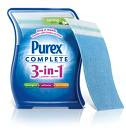Recent labor statistics indicate that more U.S. workers are putting in for jobless benefits than expected. Meanwhile RealtyTrac, an online property database, reports that foreclosures are up 21% more than last year at this time.
Time for you to recession proof your life! Here are some ways how:
STOCK UP ON CASH
A contingency reserve is a must-have right now. If you don’t have at least three to six months expenses stashed, get more aggressive about saving. Cash equals power in a recession. Also, using cash is a tried-and-true way to save and live within our means, since unlike credit cards, we can actually see how much we’re spending. Credit experts say we tend to overspend by 20% when we use plastic. What’s more, in smaller stores, local mom and pops, using cash can sometimes score you discounts. Business, stung by the bank’s 3% credit card interchange fee, would much rather you leave your credit card at home. This strategy works best at gas stations, the local tailor, repair store, beauty salon and deli, small-sized shops where that interchange fee can really take a toll.
SHOP SIMPLE
Buying generic pharmaceuticals and filling your grocery cart with store-brand products instead of upscale labels can help save up to 50% on everyday goods. Considering the average two-person household spends $200 a month on groceries, a single person could save a quick $50 just opting for basic brands. As for pharmaceuticals, we pay an average $85 more for name-brand. By switching just one monthly prescription from a brand name drug to a generic, you could save more than $1,000 a year. Not sure your drug has a generic ? Ask your doctor or pharmacist.
MILK YOUR HOUSE
Our homes may have lost value in the last few years, but there’s money to be made and money to be found under our roofs. Your home can be a source of free entertainment, revenue and savings, especially in a recession. Here are five places to find cash in your house.
1. Your kitchen. Use it! Reduce your eating out habits in half, since families spend more than 40% of their food budget on dining out, according to Consumer Reports. Save at least $100 a month.
2. Your garage. Your car is source of savings. Empty out the trunk, inflate the tires, share trips and drive a little bit below speed level, all to keep your car fuel efficient. You can reduce your fuel costs by up to 30%.
3. Your extra bedroom or finished basement. Get a roommate or take on an exchange student. Earn anywhere from $300 and upwards per month, depending on your neighborhood.
4. Your overflowing closet. Unwanted clothes, handbags and lightly worn shoes from your closet—preferably with price tags still attached—price well at second-hand, vintage or used clothing stores. In this economy, resale shops are getting tons more items, as folks look to turn their unused garments into cash. Bring in items that are still in style. Depending on the store’s policy, you can generally earn up to 50% of the resale price.
5. Your couch. America could be $10 billion richer ($90 per household) if it simply cashed in all the loose coinage lying around, according to Coinstar (Stock Quote: CSTR), which operates coin machines in more than 15,000 supermarkets worldwide. It costs 8.9% fee to convert coins to bills, but free when turning coins into a gift card or gift certificate. Commerce Bank’s Penny Arcade machines are free to use - but are only available in some states.
CREATE A SECOND INCOME.
With unemployment at 6.1% and increasing, it’s imperative to create extra revenue streams for yourself, or at the least, invest in learning new skills that can make you a more competitive job applicant. (Also if you keep busy you won’t spend money.) You can even make money by investing more of your free time in income-generating activities. Think of a clever way to monetize an activity or hobby you’re already doing. For example, if you have Web skills, consider freelancing on the side to help people with their Web sites and blogs. You can do this all from the convenience of your home. If you have a knack for cooking, offer to cater friends’ parties. Sell items on eBay.com (Stock Quote: EBAY)or have a garage sale.
Babysitting, tutoring, teaching an aerobics class on Saturdays, proof-reading college essays, etc. This tip also forces you to think as an entrepreneur, to take more control of your career path, and in this uncertain economic and job market there’s no better time than now to reevaluate and redraw your professional future.


















